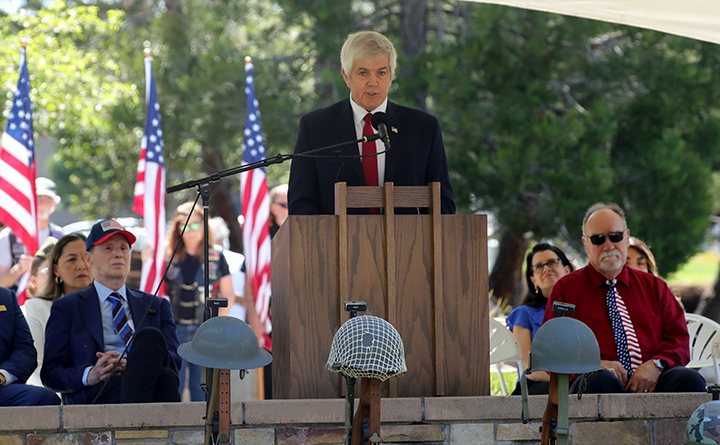CTUIR plans new housing developments on the reservation
Published 5:00 am Thursday, March 25, 2021

- Santos Garcia, of DSC Manufactured Homes, works on a manufactured home on Mission Road just east of the Mission Market.
MISSION — Whether it’s a city government or sovereign nation, every community in the 97801 ZIP code is trying to figure out how to address its housing shortage.
But at a March 17 joint meeting between the Confederated Tribes of the Umatilla Indian Reservation Board of Trustees and the Pendleton City Council, the tribes shared news that it had three projects in the works that could make a serious dent in its housing backlog.
In an interview after the meeting, CTUIR Planning Director JD Tovey said a recent housing analysis showed the reservation needed 350 units of housing over the next 20 years.
Tovey said the Umatilla Indian Reservation has plenty of land for high-income residents to build homes, as well as low-income housing options. What the reservation is lacking is middle income housing.
One of the CTUIR’s solutions is a new housing development called Nixyaawii, a Umatilla word for home that is also used for the Tribes’ governance center and charter school.
Nixyaawii is a first-of-its-kind project for the CTUIR, which is using the project to develop for-sale homes. Home buying can be tricky on the reservation since the Tribes’ land can’t be bought, but Tovey said the CTUIR is able to work around that by issuing 99-year leases on the land, a setup that mortgage lenders would recognize as the equivalent of buying the property outright.
“It will be just like owning a house,” he said.
Nixyaawii, which will only be open to tribal members, will encompass about 50 housing plots located south of the school. Tovey said the Tribes may build some spec homes, but the Tribes are looking to lease the plots to members, who will then build their own houses on the land.
After receiving coverage in the Confederated Umatilla Journal, Tovey said about 25 people have contacted the CTUIR to sign up for a mailing list to get updates on Nixyaawii. The CTUIR hopes to open the development in 2022.
North of the charter school, the Tribes are planning Timine Way North, a market-rate rental project meant to serve the CTUIR’s growing workforce.
A planned mixture of apartments and townhomes that could range from 30 to 40 units, Tovey said tribal members will be preferred tenants at the complex, but the development could also serve as temporary housing for professionals who have just moved to the area or intend to work on the reservation for a few months before moving on.
Rounding out the Tribes’ housing projects is the Lucky 7 Trailer Park renovation effort. After the Umatilla River flood heavily damaged Lucky 7 last year, the Oregon Legislature granted the CTUIR about $1 million to help replace the affordable housing that was lost to the river.
The Tribes are now in the midst of replacing the park’s trailers, a two-phase project that is expected to be completed this summer.
While the Tribes are downsizing the size of the park from 27 to 18 units, Tovey said many of the trailers were uninhabitable and unoccupied at the time of the flood, so the project is more of a lateral move in terms of numbers.
Tovey said the CTUIR is using the extra space to replace the single-wides with double-wides, and with flood victims prioritized on the tenant waiting list, some have already moved into the completed units.
The CTUIR’s new housing developers are clustered at the southwest corner of Mission Road and South Market Road, where the Tribes have already established many of its government and service buildings.
Tovey said the idea is intentional, an attempt to build a more centralized community in the Mission area. While Mission has grown significantly in recent years, Tovey said it lacks a Main Street and other traditional markers of communities around the country. Depending on how area grows after the housing projects are completed, Tovey said other amenities like retail and restaurants could be added.
While most of the CTUIR’s new housing efforts are targeting tribal members, it could affect Pendleton’s tight housing market.
At the joint meeting, Kat Brigham, the chair of the Board of Trustees, said about 500 tribal members live in Pendleton. If provided more options on the reservation, Brigham said some may decide to leave the city for the reservation, opening up more real estate in Pendleton.
While Pendleton and the CTUIR have largely operated independently in pursuing new housing for their respective communities, Tovey said both sides have held discussions about collaborating on a mutually beneficial housing project.









